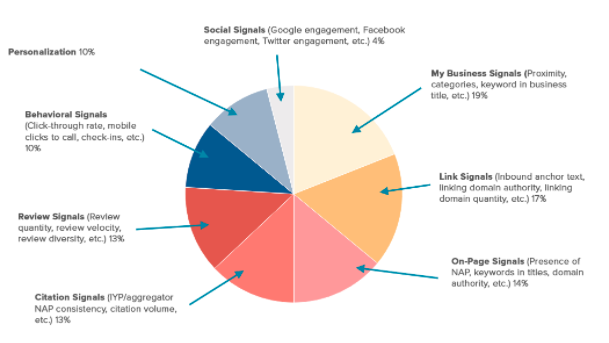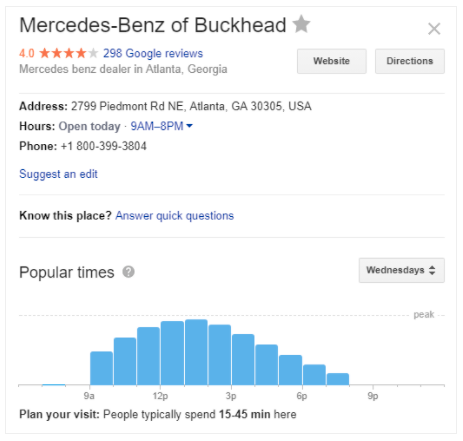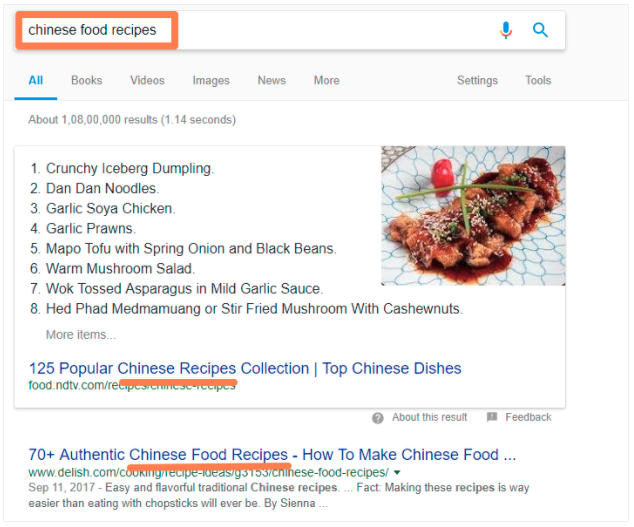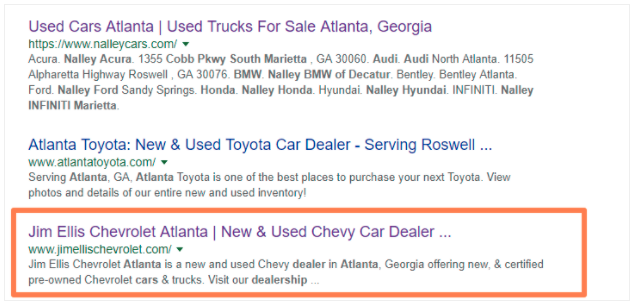As a local business owner, you actually want more customers coming to your store. What better way to attract these local customers than to get it for free? That’s what high local search engine rankings promise: free, targeted traffic coming in from relevant searches on Bing and Google by local customers.
Today, we’ll share a detailed process to rank your local store higher in search engines.
What is Local SEO?
Search Engine Optimization comes in two flavors: local SEO and regular SEO. Regular SEO deals with search engine query that doesn’t have any particular locational element.
Consider searches like “best history books” or “Chinese food recipes”. The results for these queries don’t rely on your location.
If you sell online and deliver the products worldwide, you’d need to focus on regular SEO.
In Local SEO, however, you’re dealing with queries that have a particular locational element. Consider searches like “defense attorneys in New York” or “best auto repair shop in Atlanta”.
Queries like “Chinese restaurants” are local too because Google understands that you’re searching for restaurants in your city.
If your business has a local presence and utilizes its online store to complement the local business, you’d concentrate on local SEO.
How to Improve Local Search Rankings
Some factors affect your website’s rankings. No one knows what these factors are actually, except for Bing and Google. The most ideal way we can do is to estimate based on data and experience.
Data states that local rankings are empowered by the following eight factors:

Some of these factors have a greater impact on rankings than others. So which ones should you concentrate on first?
Easy: first choose the “lowest hanging fruit”. These are generally easy to follow tasks that need minimal effort and yield out-sized outcomes.
In the case of local SEO, data demonstrates that “On-Page Signals” and “Business Signals” have a major impact on rankings. Improving these is just a matter of doing some minor edits on your site.
Getting links to your store isn’t simple even though. Thus, improving “On-Page” and “Business” signals can be your low-hanging fruit with local SEO.
When it comes to prioritizing what to fix, follow this order:
- Fix issues on your own site.
- Fix issues away from your site.
Let’s discuss how you can improve these for your local online store.
“My Business” Signals
Search engines care about showing just the most relevant outcomes to their users. Whether someone searches for “car dealers” in Atlanta, Bing and Google need to show them results near their location, and not in Boston.
This is the reason you must share relevant data with search engines. You have to tell Bing and Google exactly where you’re located, what time you’re open and what you sell. Combining these make “My Business” signals in local SEO.
- Create a business page
Both Bing and Google make it easy for businesses to share relevant data about themselves. Google’s program is known as “My Business”, while Bing’s is named “Bing Places”.
Register for both these programs with the URLs. Prioritize Google My Business as Google dominates the search market.
You might be asked to fill a few details when you create this page, such as an address, phone number, website, etc.
The name, address and phone number (‘NAP’) are important. You should utilize the same NAP on all websites and directory such as Yellow Pages, Yelp, and so on.
A high “NAP consistency” informs Google that your business is valid and thus, will rank higher.
A couple of other basic things to remember when you’re creating the business page:
- Ensure to fill in your address precisely. Additionally, make sure that your map marker location is exact. Google will send an email to this address to verify it.
- Add a link to your website.
- Utilize a valid phone number. People should be able to reach you on this number.
- Add your working hours.

- Add relevant photos
Pictures are rapidly becoming a major part of your business listings on Google. On your business page, there should be an entire section totally for pictures of the business.
At least, you should have the cover photo, or logo. Apart from this, you can likewise add pictures of the business’ interior, products, exterior, and the people who work there.
- Create Google posts
Google Posts is a new service where users can craft content right on Google which will show up on the top of the page when someone searches for their name.
Google Posts should not be a blog post. Rather than evergreen content, you’re encouraged to share relevant and timely information in Posts: an event, new promotions, etc.
You can create Posts directly from your GMB dashboard.
On-Page Signals
In SEO terminology, “on-page” signals means to be page-explicit indicators of a website’s relevance.
If someone searches for “Chinese food recipes”, any website that includes these keywords in its title will have a higher chance of ranking than a page about “Car modifications and improvements”.

It’s simpler to improve on-page signals as it just involves editing your website to show updated, accurate information.
- Add a sitemap
A “sitemap” is a list of all the links on your website for search engine robots.
It is easier for search engines to crawl and index your website through the sitemap. The easier the site is to crawl, the faster search engines can find out your pages and rank them.
- Optimize name & value proposition
Have the following two things handy before you start the optimization exercise:
- A unique value proposition that hits on your important keywords. This ought to be 2-3 sentences only.
- A unique name for your business. This is what people will look for when they search you up.
You’ll see this result if you search for “car dealers in Atlanta”:

The website title has the following three things:
- The business name
- The business’ location
- The business’ target keywords
The site’s description also highlights the business’ value proposition and target keywords.
You can note these down for your own business before jumping to the next step.
- Fill out SEO fields for products
Another thing you’ll want to do is to enter relevant SEO details for your store and its products.
Besides the name of the product, you need both the meta description and title to contain your target keywords too.
For example, if you’re selling flowers for local weddings, you can utilize something like this:
Title: Lily Wedding Centerpieces for Weddings in Atlanta
Meta Description: Lily wedding centerpieces and lily floral arrangements for Atlanta weddings
Your aim ought to be to target all possible long-tail keyword combinations. If someone searches for “rose wedding floral arrangements in Atlanta”, your store will show up as you’ve utilized these keywords on your product page.
- Add your site to Google Webmasters
Google Webmasters is a tool for website owners to get better search visibility data about their sites.
While it won’t improve your site rankings, it can tell you what queries you’re ranking for, whether there are any crawling problems with your site, and how you can improve your search presence.
- Be mobile-friendly
Not running a mobile-friendly ecommerce website is the worst thing you can do for your website SEO. Google has informed webmasters the same in no uncertain terms: mobile-friendliness affects your rankings.
Luckily, if you’re using Builderfly, this issue is taken care of for you. Your store is built-in mobile-friendliness.
Other Signals
As we saw earlier, there are a couple of other off-site components that contribute to your local SEO success.
Briefly, this includes:
- Add your website to local business directories. Utilize the same phone numbers and address your GMB listing. This is known as building “citations”.
- Ask local bloggers, newspapers, websites, and so on to link to your site, particularly in pages such as “best X in Y city”.
- Promote your website link on social media.
- Create valuable content to drive customers.
For now, optimizing “My Business” and on-page SEO signals will go a long way towards improving your rankings.
Additionally, since these are easy to do, handling these first will be very less resource-intensive than embarking on a costly SEO campaign.
Happy rankings!








